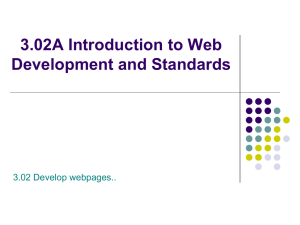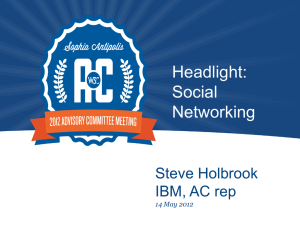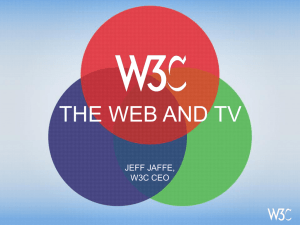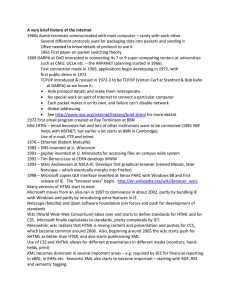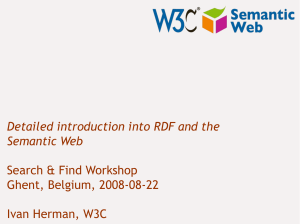W3C: Technologies and Standards for the World Wide Web
advertisement
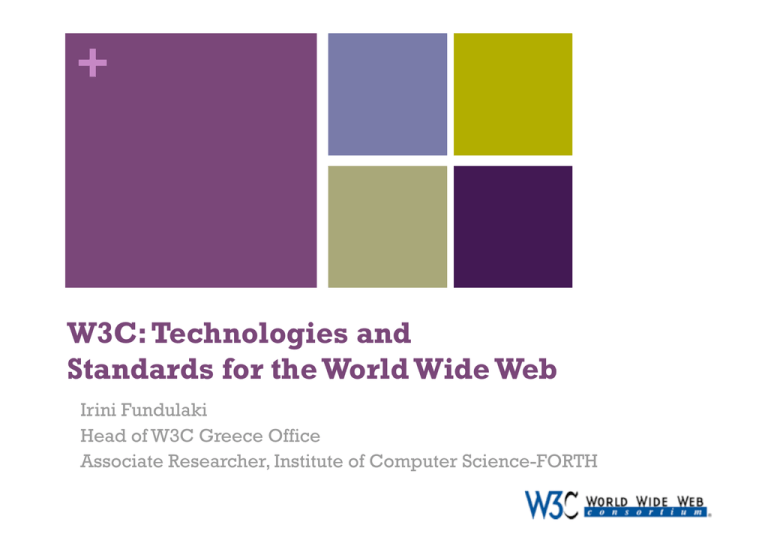
+ W3C: Technologies and Standards for the World Wide Web Irini Fundulaki Head of W3C Greece Office Associate Researcher, Institute of Computer Science-FORTH + A short introduction to W3C Founded in 1994 by Sir Tim Berners-Lee (inventor of the Web) W3C is the home of the Web and Semantic Web (http://www.w3.org) 400+ members (the usual suspects, SMEs, users, grasroots ...) (http://www.w3.org/Consortium/Member/List) Invited experts and volunteers 65 groups doing the work (http://www.w3.org/Consortium/activities) 18 world offices all over the world (http://www.w3.org/Consortium/Offices) a team of ~55 individuals - working and living distributed around the globe - coordinated by 3 hosts MIT (US), ERCIM (Europe), Keio University (Japan) 4Mio hits/day on http://www.w3.org/ + World Wide Web Consortium (W3C) W3C’s Mission: “to lead the Web to its full potential” “The social value of the Web is that it enables human communication, commerce, and opportunities to share knowledge [and] to make these benefits available to all people, whatever their hardware, software, network infrastructure, native language, culture, geographical location, or physical or mental ability.” Sir Tim Berners-Lee, Inventor of the Web and Founder of W3C + Goals of W3C Web for Everyone enable human communication, commerce and knowledge sharing to all people independently of infrastructure, physical or mental abilities Web on Everything facilitate Web access from any kind of device Knowledge Base support diverse user communities in the resolution of hard problems Trust and Confidence promote technologies that support collaborative developments in secure transactions with trusted agents + Goals of W3C (under the hood) prevent the Web from breaking apart grant interoperability make sure that the web is a creative space maintain extensibility lead the web to its full potential + W3C Technologies from the Triple HTTP to communicate URL to identify resources HTML as a document language to The Technology Stack + the W3C Technology Stack + W3C Standards More than 100 Standards HTML, XHTML, XML, XML Schema, XPath, XQuery, XSLT, RDF, RDF Schema Language, SPARQL, OWL, among others + Making Standards at W3C a very open and transparent process to form consensus http://www.w3.org/Consortium global focus responsive to the public a transparent patent policy http://www.w3.org/2004/02/05-patentsummary.html that protects IPRs and promotes proliferation of standards standards are available for free (might be essential for their success!) - find all of them here: http://www.w3.org/TR/ (use and implement!) For more information, contact the W3C Greece Office at w3c@w3c.gr
